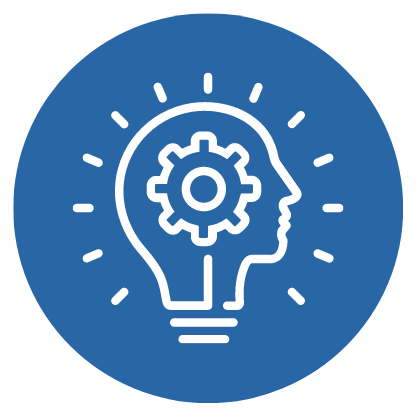What is the Future of Us? | Jason Silva | Mindvalley Talks
Reference: Mindvalley Talks. (2019, February 21). What Is The Future of Us? | Jason Silva [Video]. YouTube.
We Make Your Education Count

Get the Credit You Deserve and Become the Most Attractive Job Candidate by Earning and Posting A+ Badges to Your Linkedin Profile.
Sign Up to Get Started at Accredicity
|
Unlock the power of your creativity and technology with Jason Silva and discover what the future of us holds. In this video, Jason Silva talks about the future of us and our capacity to envision a better future through technology. He explains that technology is the literalization of human imagination and that the tools to change the world are now in everybody's hands. Silva draws on the work of Ray Kurzweil, talking about the difference between linear change and exponential change and the implications of exponential transformation. He cites Steven Johnson's book "Where Good Ideas Come From" to discuss the concept of the adjacent possible. Jason Silva's presentation encourages us to use our imagination and technology to create a better future. Learning Outline1. Technology is an embodiment of human creativity in the world and is how we turn the human mind inside out. Instructional ContentThe future is an exciting and ever-evolving concept that is constantly being shaped by technological innovation. This is something that Jason Silva, the host of the National Geographic Channel's "Brain Games," explores in his video, "What Is The Future of Us?" In this video, Silva explains how human imagination and creativity have been used to create technology that extends our reach and redefines our limits. He also explains how this technological acceleration has created a sense of vertigo, as the rug is being pulled from underneath our feet. Silva references the work of Ray Kurzweil to illustrate the difference between linear change and exponential change. He explains that technological advancement follows an exponential rate, which means that the world is moving and changing faster than ever before. He also cites Gordon Moore's law to show how technology has become a million times cheaper, smaller and more powerful in the last 40 years. Silva further explains that technology is not only a disruptive force, but it is also a tool that is available to everyone. He talks about how a young kid in rural Africa or Bali can have better communication technology than the president had 25 years ago. He also references Steven Johnson's book "Where Good Ideas Come From: The Natural History of Innovation," to discuss the concept of the adjacent possible. Overall, Jason Silva's video provides an inspiring exploration of the potential of technology and how it can be used to shape our future. By understanding the difference between linear and exponential change, we can create a more positive vision for the future and use our tools to extend our reach and redefine our limits. Productivity
|

Envisioneering your future is like being a magician - you can use your imagination and tools to create whatever reality you want. Technology is the embodiment of human creativity and it has changed the world throughout history. We now live in an age of radical disruption and technological acceleration - within a year or a decade, the world can be transformed. Ray Kurzweil explains that technology advances exponentially, much faster than the linear steps you'd take to get from one to thirty. This means that in just 40 years, a supercomputer which used to be half a building, cost $60 million and needed special permission to use, can now fit in your pocket, is a million times cheaper, a million times smaller and a thousand times more powerful. This brings incredible possibilities to positively impact the world - the tools are now in our hands. We just need to use our imaginations and be "envisioneers" to make our dreams come true. Video Quotes1. "We are Imagineers. We have this capacity to conjure up these delightful future possibilities, choose the most amazing possibility, and then pull the present forward to meet those possibilities." - Jason Silva 2. "Technology is the literalization of human imagination in the world. Technology is how we turn the human mind inside out and how we impregnate the world with mind." - Jason Silva 3. "The tools to change the world are now in everybody's hands. You have more computational capacity, the aggregate of human creativity compressed into a device made of plastic and metal in your pocket, than the president had 25 years ago." - Jason Silva Related Quotes"The future is an open book. We get to write the story. We get to choose the future we want to create." - Jason Silva "The future of us is about exponential potential, about the potential for us to evolve our minds, to evolve our beings, to evolve our reality." - Jason Silva "We can create a world of abundance, a world of freedom, a world of joy - and that's the future of us." - Jason Silva Competencies1. Digital Literacy Learning Outcomes1. Remember: Identify the key concepts and ideas presented in the video related to envisioneering and the implications of technological acceleration. 2. Understand: Analyze the main themes of the video regarding the relationship between human imagination and technology. 3. Apply: Demonstrate an understanding of Moore’s Law and the implications of exponential progress. 4. Analyze: Evaluate the importance of extended mind theory to the concept of envisioneering. 5. Evaluate: Examine the ways in which technological advancement has allowed for greater global connectivity and changed the way we think about change. 6. Create: Synthesize a new idea for how to use technology to positively impact the world based on the themes discussed in the video. Sample Answers1. I have learned that technology has always been a disruptive force, but it used to take many generations for the world to change. Now, the world is upended within a year or a decade, and this is due to exponential progress. 2. I understand that technology is a reflection of human creativity, and it is our tool to extend our thoughts, reach, and vision. With this in mind, we need to be "envisioneers" to build the tools that will build us in return. 3. Finally, I have realized that a linear brain cannot understand the implications of exponential transformation and that we must teach ourselves to think exponentially in order to envision our future. Jason SilvaJason Silva is a filmmaker, philosopher, and public speaker who, according to his website, has "a passion for science and technology, and the possibilities that come with it." He is a futurist and a self-proclaimed "humanist" who believes that technology is a tool that can be used to create a better future for humanity. He is the creator and host of Shots of Awe, an Emmy-nominated short film series, and has been featured in TIME Magazine, The Atlantic, and Wired Magazine. He is a regular contributor to the TED Talks platform and is a partner of the World Economic Forum, where he speaks on topics related to innovation and the future of technology. Learning DesignThese competencies are important for the course on Productivity because they form the basis of the skills needed to be successful in the workplace. Digital Literacy is essential to be able to operate in a digital world, Creativity and Innovation is needed to be able to come up with unique solutions to problems, and Vision is necessary to be able to see the bigger picture and plan for the future. AssessmentQ: According to Jason Silva, what is the difference between linear change and exponential change? A. Questions1. How can understanding the concept of exponential change help us to anticipate and prepare for the future? 5. How can we use technology to extend our reach and redefine our limits? Keywordsfuture technology, exponential progress, "envisioneering future possibilities", "cognitive philosopher david chalmers", "technological acceleration vertigo", "extended mind thesis andy clark", "marshal mcluhan tools build", "ray kurzweil singularity near", "gordon moore moores law", "kevin kelly technium kingdom", "adjacent possible steven johnson" Facts1. Ray Kurzweil coined Moore's Law, which states that technology exponentially accelerates over time. Trends1. Developing enhanced augmented reality applications that allow individuals to visualize their future and use technology to make it a reality. SourceThis learning instructional guidance was formulated using the GPT-3 language model created by OpenAI. ShareImagining the future and using it to create the reality we want is the key to transforming our world! We have the power in our pockets to amplify and spread our creativity faster than ever before. #Imagination #Creativity #TheFutureIsNow 🤩 @Accredicity |








 6 Creds - Productivity
6 Creds - Productivity


